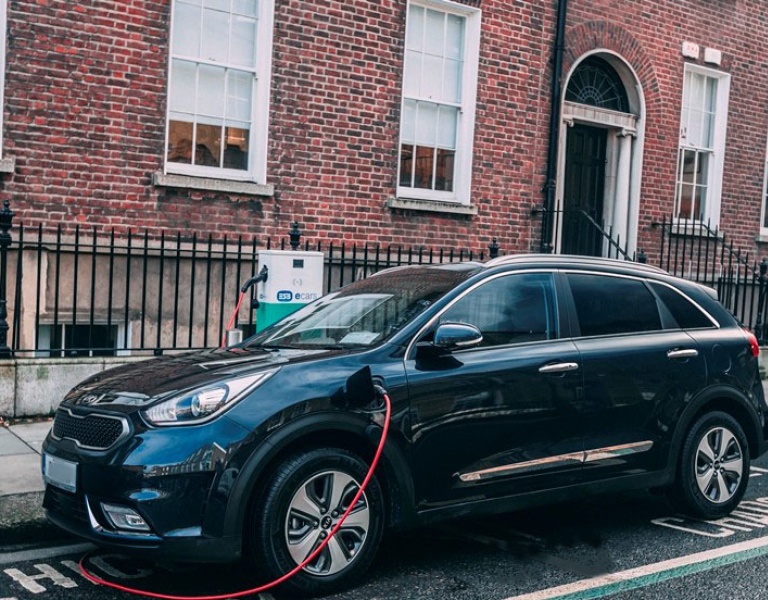Easy to charge
Main charging types
An EV battery is charged by connecting the vehicle to a charge point using a charging cable. Most vehicles have a standard charge and a fast charge. This can be through a single connector or separate dedicated connectors.
The main charging types for electric vehicles are:
- Home charging
- On-street charging
- Destination charging
- Fast charging
Home charging
EV owners charge at home through a dedicated charge point. These charge points will safely charge the vehicle at a rate that suits the power supply. A home charge point can supply 3.6kW (16Amps) to the vehicle although some supply up to 7.2kW(32Amps). Some houses may only be able to accept the 7.2kW charger, talk to your electrician to find out more.
When we charge with an AC connector at home or on-street the power is delivered to the vehicle where an on-board battery charger (inside the vehicle) manages the rate of charge.
How to save money
With approximately 80% of charging being done from home, home is where your plug is. It's also where you can use your vehicle timer or smartphone app to use cheaper night-time electricity.
Charging at someone else's home
If you are visiting a home with no charge point it is possible to use a 'granny cable'. This charge cable allows you to charge the vehicle from a standard household socket. A granny cable should reduce the rate of charge to ensure a safe and reliable experience. It is not a fast as a standard charge point, however it might give you some extra reassurance when visiting.
Home charging point power sizes
| Power delivery type | Charger ranges from | To |
|---|---|---|
| Single phase power (230 Volt) | 3.6kW (16 Amp) | 7.2kW (32 Amp) |
Public (on-street) and destination charging
On-street and public parking chargers have become common around our cities and towns. As an EV owner you may charge or top up using one of these. You may also use private destination chargers that you will find in facilities like small businesses or hotels.
Plan ahead using the ecars Charge Point Map to remove any worries about public charging.
Public and destination charging point power sizes
These are usually 22kW, however, many cars can only accept a single phase charge (see above).
| Power delivery type | Charger ranges from | To |
|---|---|---|
| Single Phase (230 Volt) | 3.6kW (16 Amp) | 7.2kW (32 Amp) |
| Three Phase (400 Volt) | 11kW (3 x 16 Amp) | 22kW (3 x 32 Amp) |
Fast / rapid charging
Fast / rapid refers to chargers that deliver 50kW DC or 43kW AC charging. You will often find them in places like garage forecourts or supermarkets. Plan long journeys using the ecars Charge Point Map to find fast chargers along your route. The cable used for a fast charge is attached to the charge point and not carried in the vehicle.
Fast charge points delivering DC power to the vehicle act as battery chargers. They communicate with the vehicle and control the charge rate according to the demands of the vehicle controller.
Fast / rapid charging point specifications
The type of fast charging you use will depend on the type of vehicle you choose.
| Power delivery type | Charger power |
|---|---|
| CHAdeMO | ~50kW |
| Combined Charging System / CCS | ~350kW |
| Tesla Supercharging | ~250kW |
| AC Fast charging | ~43kW |
High performance charging systems
CCS charging technology is used across Europe. Its next generation of High Performance Charging (HPC) will allow charging up to 350kW. We should see it appear along Irish roadsides soon. Vehicles with CCS technology will be able to use this infrastructure, up to the maximum charging rate of the vehicle.
Charging at apartment complexes
If you want to install a charge point at an apartment complex, you will need to consult the management company. The charge point may need to be connected to a landlord supply rather than the supply for your apartment. Charge point suppliers can offer solutions to address access control and energy cost recovery.
